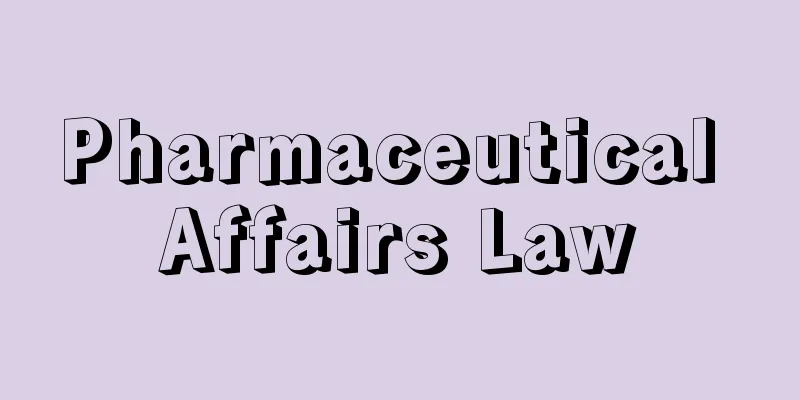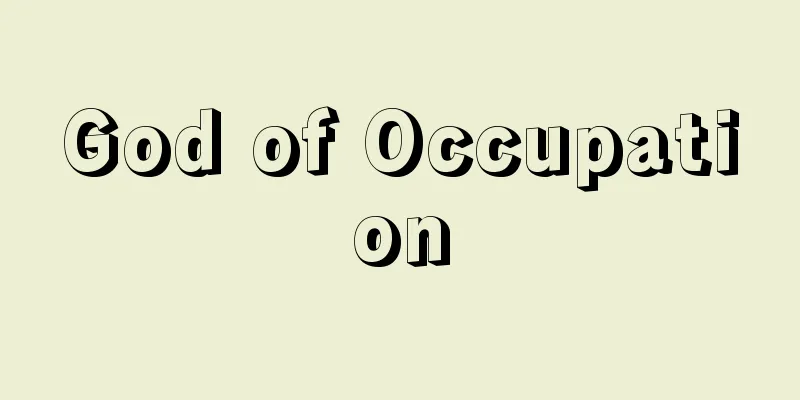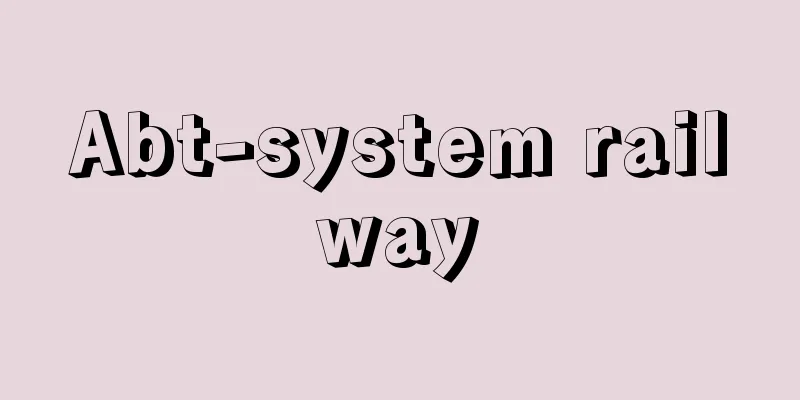Pharmaceutical Affairs Law

|
This law, which concerns the manufacture and handling of medicines, quasi-drugs, cosmetics and medical devices, was promulgated on August 10, 1960 as Law No. 145 and came into effect on February 1, 1961. It has since been partially revised several times. Another pharmaceutical law is the Pharmacists Law. The Pharmaceutical Affairs Law provides the necessary regulations to ensure the quality, efficacy and safety of drugs, quasi-drugs, cosmetics and medical devices. At the same time, it aims to improve public health by taking necessary measures to promote research and development of drugs and medical devices that are particularly necessary for medical purposes. First, the general provisions state this purpose and define drugs, quasi-drugs, cosmetics, medical devices, pharmacies and rare disease drugs (orphan drugs). The contents of the law consist of general provisions, local pharmaceutical affairs councils, pharmacies, drug manufacturing and sales businesses and manufacturing businesses, registered certification organizations, drug sales businesses and medical device sales businesses, standards and testing of drugs, handling of drugs, advertising of drugs, supervision, miscellaneous provisions and penalties. When it was promulgated in 1960, the contents consisted of general provisions, provisions on the Pharmaceutical Affairs and Food Sanitation Council, pharmacies, the manufacturing and importing/selling of pharmaceuticals, etc., designated investigation organizations, the sale of pharmaceuticals, and the sale and rental of medical equipment, standards and testing of pharmaceuticals, etc., handling of pharmaceuticals, etc., advertising of pharmaceuticals, etc., supervision, designation of rare disease drugs and rare disease medical equipment, miscellaneous provisions, and penal provisions. In the 1979 (Showa 54) amendment, provisions were added to the miscellaneous provisions regarding the provision of information and the handling of therapeutic drugs. In addition, the Minister of Health and Welfare (current Minister of Health, Labour and Welfare) was given the authority to revoke approval. In 1983, direct approval applications from foreign manufacturers were accepted, and in 1993, "promotion of research and development of pharmaceuticals, etc." was added to the objectives of the Pharmaceutical Affairs Law. As a result, the Pharmaceutical Affairs Law promoted research and development of rare disease drugs, which affect a small number of patients but are highly necessary. This was an attempt by the government to provide financial assistance to companies that had tended to shy away from such drugs due to the difficulty of covering the development and research costs. The Pharmaceutical Affairs Law, which had previously been entirely regulated, took on a new role of promoting pharmaceutical development. Then, on June 2, 1996, a partial revision of the Pharmaceutical Affairs Law (Law No. 104 of 1996) was promulgated, and came into force on April 1, 1997, except for the special permission before approval that came into force at the same time as the promulgation. The occurrence of serious side effects from the combination of Sorivudine with fluorouracil-based anticancer drugs and the problem of AIDS virus infection from unheated blood products (drug-induced AIDS problem) triggered the need for strengthening approval screening, such as thorough provision of information on drugs and prompt supply of drugs that require emergency use, and measures to ensure the safety of drugs at each stage, from clinical trials to approval screening and post-marketing, were incorporated into this law. The main points of the revision were to enact the "Good Clinical Practice Guidelines (GCP)" to ensure the reliability of clinical trial data and the safety of subjects, and to ensure that clinical trials are conducted appropriately, and regarding approval screening, it became possible to allow the manufacture, import, sale, and use of drugs that are thought to have a significant impact on the lives of citizens under certain conditions without approval. As a safety measure in the post-marketing stage, the "Standards for Post-Marketing Surveillance of Pharmaceuticals (GPMSP)" was made a legal standard, and the basis for reporting side effects by companies, which had previously been stipulated by ministerial ordinance, was clearly stipulated in law. Furthermore, it was stipulated that when an infectious disease suspected to be caused by a pathogen contaminated in a pharmaceutical product becomes known, it must be reported to the Minister of Health, Labour and Welfare (at the time). In addition, in order to ensure the proper use of pharmaceuticals, a duty was added for pharmacies and other institutions to make an effort to provide drug use guidance to patients and other people who purchase and use pharmaceuticals. On the other hand, since dispensed drugs do not fall under the category of pharmaceuticals under the Pharmaceutical Affairs Law, the Pharmacists Law was amended at the same time to make drug use guidance an obligatory act for pharmacists. In addition, major revisions were made to the pharmaceutical affairs system as a whole, such as strengthening the role of the supervising pharmacist at a pharmacy to ensure a more appropriate separation of medical and pharmaceutical duties. In 2000, some revisions were made in line with the reorganization of government ministries and agencies, and in 2001 the Central Pharmaceutical Affairs Council was renamed the Pharmaceutical Affairs and Food Sanitation Council. The partial revision in 2002 was made against the backdrop of the need to ensure international consistency due to the development of pharmaceuticals using biotechnology and genomic technology, advances in medical technology, and changes in people's lives, industry, and government activities brought about by the spread of IT. Specifically, the term "medical equipment," which had been used since 1948, was changed to "medical devices," and medical devices were classified into three categories based on international classifications, namely, highly-controlled medical devices, controlled medical devices, and general medical devices, in order to implement safety measures in response to risks to the human body. Separately, medical devices that require specialized knowledge and skills for storage, inspection, repair, and other management were designated as specific maintenance-controlled medical devices (external pacemakers, etc.), and new regulations were established regarding approval, certification, sales, etc. Meanwhile, with regard to the handling of pharmaceuticals, the previous term "medicines requiring prescription" was abolished and renamed "prescription drugs," with the Minister of Health, Labour and Welfare now designating specific items in accordance with actual circumstances under designated criteria. Until July 2003, reporting of side effects from medical institutions was optional, but now reporting is mandatory when certain conditions are met. Clinical trials were previously limited to those conducted by companies, but now they can be conducted primarily by medical institutions and doctors. In addition, the concepts of "biological products" and "specified biological products" were newly defined by law, and safety measures for them were stipulated by law. Furthermore, the responsibility for safety measures on companies was clarified, and the manufacturing approval system was reviewed to ensure international consistency. This revised Pharmaceutical Affairs Law came into full effect in 2005. This was followed by a partial revision of the Pharmaceutical Affairs Law in 2006. The main contents of the revision were matters related to the pharmaceutical sales system, matters related to designated drugs, and new regulations on the obligations of pharmacies in line with the revision of the Medical Care Act, with the goal of amending the sales system for the first time since the Pharmaceutical Affairs Law was enacted in 1960, and of stipulating the regulation of abused drugs in the Pharmaceutical Affairs Law. Until then, there were four types of pharmaceutical sales businesses: general sales businesses, drug distributors, door-to-door sales businesses, and special sales businesses. This revision reduced this to three types: store sales businesses, door-to-door sales businesses, and wholesale sales businesses. Next, over-the-counter drugs were classified into three types: Class 1, Class 2, and Class 3 drugs, based on the level of side effects, and the sales personnel were stipulated as pharmacists for Class 1 drugs, and pharmacists or registered sales personnel for Class 2 and Class 3 drugs. A new qualification, registered salesperson, was established, and while previously only pharmacists were able to sell over-the-counter drugs, registered salespersons were now able to sell drugs that were relatively safe. In addition, pharmacy operators, store sales businesses, and door-to-door sales businesses were required to provide information about the over-the-counter drug sales business to ensure proper use. Regarding designated drugs, the phrase "measures for regulating designated drugs" was added to the revised Pharmaceutical Affairs Law, Article 1, "Article on the Purpose of the Pharmaceutical Affairs Law." A "designated drug" is a drug that is likely to have a stimulating or depressant effect on the central nervous system or a hallucinogenic effect, and is likely to cause health and hygiene hazards, and is designated by the Minister of Health, Labor and Welfare. Usually, they are called "illegal drugs." The manufacture, import, sale, administration, storage and display of such drugs are now prohibited, and furthermore, inspection of items suspected of being designated drugs can be carried out by order of the Minister of Health, Labor and Welfare or the prefectural governor. [Fumiji Koho] HistoryJapan's pharmaceutical laws were first established in 1874 (Meiji 7) by the Ministry of Education's Medical Bureau, with the Medical System consisting of 76 articles, which was issued to the three prefectures of Tokyo, Kyoto, and Osaka. This set out regulations on the permission to open pharmacies, the qualifications of pharmacist owners, and licenses to sell medicines. The Pharmaceutical Law of 1889, known as the Pharmaceutical Business and Handling Regulations, renamed pharmacies to pharmacies and drug store owners to pharmacists, and these laws made it impossible to open pharmacies unless you were a pharmacist. This put an end to the pharmaceutical system. However, over-the-counter medicines, which are folk medicines, were not covered by the Pharmaceutical Law, and were regulated separately by the Pharmaceutical Law of 1877, and the Pharmaceutical Law of 1914. In 1925, the Pharmaceutical Law became independent of the Pharmaceutical Law, but during World War II, the Pharmaceutical Law, Pharmaceutical Law, and Pharmaceutical Law were unified and the first Pharmaceutical Affairs Law was promulgated. This law was heavily regulated, and after the war it was completely revised and the old Pharmaceutical Affairs Law was enacted in 1948 (Showa 23). Later, issues arose regarding the separation of medical and pharmaceutical functions and rapid and remarkable advances were made in pharmaceuticals, and the Pharmaceutical Affairs Law was enacted in 1960 as a system to address these issues, and at the same time the Pharmacist Law was again separated from the Pharmaceutical Affairs Law. [Fumiji Koho] Revised Pharmaceutical Affairs LawAfter the 2006 revision of the Pharmaceutical Affairs Law, which included a review of the pharmaceutical sales system (establishment of a new qualification for registered salespersons) and restrictions on drug abuse such as designated dangerous drugs, the Supreme Court ruled that it was illegal to limit the sale of over-the-counter drugs over the Internet to Class 3, and as a result, all over-the-counter drugs from Class 1 to Class 3 became available for sale over the Internet. Therefore, in the revised Pharmaceutical Affairs Law that came into effect in 2014, from the perspective of ensuring safety, new regulations were established that, among over-the-counter drugs classified as Class 1, items that have just been changed from prescription drugs and highly toxic drugs are designated as prescription drugs and must continue to be sold in person, and if safety is confirmed after three years, they can be changed to over-the-counter drugs. Furthermore, the 2014 amendment established "regenerative medicine products" and "in vitro diagnostic drugs" (reagents for testing blood, urine, stool, etc.) as new categories separate from pharmaceuticals and medical devices. Accordingly, the Pharmaceutical Affairs Act was renamed the "Act on Ensuring the Quality, Effectiveness, and Safety of Pharmaceuticals, Medical Devices, etc." (Pharmaceutical and Medical Device Act). This new law aims to implement the necessary regulations to ensure the quality, effectiveness, and safety of pharmaceuticals (including prescription drugs and over-the-counter drugs, as well as quasi-drugs and cosmetics), medical devices, and regenerative medicine products, to improve health and hygiene, and to promote the development of medical devices and regenerative medicine products by speeding up and streamlining the approval and licensing process. Furthermore, due to the widespread sale of dangerous drugs that are not subject to regulation as designated substances, and health foods that contain pharmaceutical ingredients, new legislation has been enacted to regulate these as unapproved pharmaceuticals (unapproved and unlicensed pharmaceuticals) and to prohibit their advertising and sale nationwide. [Editorial Department, September 16, 2016] "Pharmaceutical Affairs Law Terminology Study Group (ed.), Commentary on Pharmaceutical Affairs Law Terminology (1992 , Yakumu Kohosha)" ▽ "Ministry of Health, Labor and Welfare Pharmaceutical Affairs Administration Study Group supervised, Article-by-Article Commentary on the Revised Pharmaceutical Affairs Law (1998, Chuohoki Publishing)" ▽ "Aoyagi Kentaro et al., Commentary on the Pharmaceutical Affairs Law, Pharmacists Law, and Poisonous and Deleterious Substances Control Law, 9th Edition (1999, Yakuji Nipposha)" ▽ "Japan Compendium Association supervised, Guide to the Pharmaceutical Affairs Law and Pharmacists Law, 1998 Edition (1999, Yakugyo Jihosha)" ▽ "Pharmaceutical Affairs Law Regulations Study Group (ed.), Easy Pharmaceutical Affairs Law, 4th Edition (2002, Jiho)" ▽ "Pharmaceutical Affairs Study Group (ed.), Illustrated Outline of the 2002 Revised Pharmaceutical Affairs Law and Blood Law (2002, Jiho)" ▽ "Compilation of Laws and Regulations Related to the Pharmaceutical Affairs Law and Pharmacist Law" edited by the Pharmaceutical Affairs Research Association (Yakumu Kohosha) [Reference items] | | | | functions | | | | | | | drugs | | | | |Source: Shogakukan Encyclopedia Nipponica About Encyclopedia Nipponica Information | Legend |
|
医薬品、医薬部外品、化粧品および医療機器の製造、取扱いなどに関する法律で、1960年(昭和35)8月10日、法律第145号として公布され、翌1961年2月1日より施行された。その後数回にわたる一部改正が行われている。薬事法規としては、このほかに「薬剤師法」がある。 薬事法は、医薬品、医薬部外品、化粧品および医療機器の品質、有効性および安全性を確保するため必要な規制を行う。それととともに、医療上とくに必要性の高い医薬品および医療機器の研究開発促進のために必要な措置を講ずることにより、保健衛生の向上を図ることを目的としている。まず、総則でこの目的と医薬品、医薬部外品、化粧品、医療機器、薬局、希少疾病用医薬品(オーファンドラッグ)の定義が記されている。内容としては、総則、地方薬事審議会、薬局、医薬品等の製造販売業及び製造業、登録認証機関、医薬品の販売業及び医療機器の販売業等、医薬品等の基準及び検定、医薬品等の取扱い、医薬品等の広告、監督、雑則、罰則からなっている。 1960年の公布当時の内容は、総則、薬事・食品衛生審議会、薬局、医薬品等の製造業及び輸入販売業、指定調査機関、医薬品の販売業ならびに医療用具の販売業及び賃貸業、医薬品等の基準及び検定、医薬品等の取扱い、医薬品等の広告、監督、希少疾病用医薬品及び希少疾病用医療用具の指定等、雑則、罰則からなっていた。 1979年(昭和54)の改正では、雑則における情報の提供などと治療薬の取扱いについての規定が追加された。また、承認の取消しが厚生大臣(現、厚生労働大臣)の権限で行えるようになった。1983年には外国製造業者の直接承認申請が、1993年(平成5)には薬事法の目的に「医薬品等の研究開発の促進」が加えられた。それにより患者数が少ないものの、必要性が高い希少疾病用医薬品の研究開発が薬事法によって進められた。開発費や研究費の採算があわないため、敬遠しがちだった企業に対し、国が資金援助をしようとするものである。それまで規制一辺倒であった薬事法に医薬品の開発促進という新しい性格が加わった。 そして、1996年6月2日に薬事法の一部改正(平成8年法律第104号)が公布され、公布と同時に施行された承認前の特別許可を除き、1997年4月1日より施行された。ソリブジンとフルオロウラシル系抗癌(がん)剤との併用による重篤な副作用の発現、非加熱血液製剤によるエイズウイルス感染問題(薬害エイズ問題)が引き金となり、医薬品の情報提供の徹底化や緊急使用が必要な医薬品の迅速な供給など、承認審査の強化が求められ、医薬品の治験から承認審査、市販後に至るまで各段階での医薬品の安全性を確保する対策がこの法律に組み込まれた。改正の要点は、治験データの信頼性や被験者の安全性を確保し、適正な治験が実施されるよう「医薬品の臨床試験の実施基準(GCP)」を法制化し、承認審査については国民の生命に重大な影響を与えると思われる医薬品について、一定の条件下で承認を経ることなく、特例的に製造または輸入販売を許可し、使用を認めることを可能にした。市販後段階における安全対策として「医薬品の市販後調査の基準(GPMSP)」を法律に基づく基準とし、従来省令で規定していた企業における副作用報告の根拠を法律上明確に規定した。さらに、医薬品に混入した病原体が原因と疑われる感染症を認知したときは、厚生大臣(当時)に報告しなければならないことが明記された。また、医薬品の適正使用を確保するため、患者など医薬品を購入して使用する者に対する薬局などの服薬指導の努力義務が加えられた。一方、調剤された薬剤は薬事法における医薬品には該当しないので、同時に薬剤師法の改正を行い、服薬指導を薬剤師の義務行為とした。そのほか医薬分業がより適切に行われるよう薬局の管理薬剤師の役割強化など、薬事制度全般にわたる大幅な改正がなされた。 2000年(平成12)には省庁再編に伴う一部改正が行われ、2001年より中央薬事審議会が薬事・食品衛生審議会に名称変更された。 2002年の一部改正は、バイオテクノロジー、ゲノム技術を応用した医薬品の開発、医療技術の進展や、IT化による国民生活、産業・行政活動の変化に伴い国際的整合性を図る必要が生じてきたことなどを背景に行われた。 具体的には、1948年(昭和23)以降使用されていた「医療用具」という名称を「医療機器」に変え、人体に与えるリスクに対応した安全対策を講じるため国際分類等を踏まえて高度管理医療機器、管理医療機器、一般医療機器の三つに分類した。これとは別に保管点検、修理その他の管理に専門的な知識および技術を必要とする医療機器を特定保守管理医療機器(体外型ペースメーカー等)とし、承認、認証、販売等に関する規定が新たに定められた。 一方、医薬品の取扱いについては、従来の「要指示医薬品」を廃止し、「処方せん医薬品」と名称を変え、指定基準のもと実状に沿って具体的に品目を厚生労働大臣が指定することとなった。医療機関からの副作用報告は2003年7月までは任意であったものが、一定条件に該当する場合は報告することが義務づけられた。治験については企業が行う場合に限られていたのが、医療機関、医師が主体となって行う治験が可能となった。また、「生物由来製品」「特定生物由来製品」の概念を法律で新たに定義し、その安全対策が法律で定められた。さらに企業の安全対策責任の明確化と国際的整合性を踏まえた製造承認制度の見直しがなされた。この改正薬事法は2005年全面施行された。 続いて2006年薬事法の一部改正が行われた。改正のおもな内容は医薬品の販売制度に関する事項、指定薬物に関する事項、医療法改正に伴う薬局の新たな義務規定で、1960年に薬事法が制定されて以来初めての販売制度の改正と、乱用薬物の規制を薬事法で規定することを目標になされた。 それまでは、医薬品の販売業には一般販売業、薬種商販売業、配置販売業、特例販売業の四つの業種があったが、この改正で店舗販売業、配置販売業、卸売販売業の3種となった。次に一般用医薬品を副作用の程度等を基準として第一類医薬品、第二類医薬品、第三類医薬品の三つに分類し、販売に従事する者として第一類医薬品は薬剤師、第二類および第三類医薬品は薬剤師または登録販売者と定められた。ここで新しく登録販売者という資格が設けられ、従来薬剤師でなければ一般用医薬品は販売できなかったのが、比較的安全性の高い医薬品に限り登録販売者でも販売可能となった。また、薬局開設者、店舗販売業者、配置販売業者に対し、適正使用のため、一般用医薬品の販売業に関する情報の提供が義務づけられた。 指定薬物に関しては、改正薬事法第一条「薬事法の目的の条文」に「指定薬物の規制に関する措置を講ずる」という文言が入った。「指定薬物」とは中枢神経系の興奮もしくは抑制または幻覚の作用を有する蓋然(がいぜん)性が高く、保健衛生上危害が発生するおそれがある薬物で、厚生労働大臣が指定したものをいう。通常、「違法ドラッグ」と称される。製造、輸入、販売、投与、貯蔵、陳列が禁止され、さらに指定薬物の疑いがある物品の検査も厚生労働大臣または都道府県知事の命令でできることとなった。 [幸保文治] 沿革日本の薬事に関する法規は、1874年(明治7)文部省医務局から東京、京都、大阪の三府へ布達された76か条からなる「医制」によって、初めて薬舗の開設許可、薬舗主らの資格、売薬の免許などに関する規定が設けられ、さらに1889年の「薬律」とよばれる「薬品営業並薬品取扱規則」によって薬舗を薬局、薬舗主を薬剤師と改称し、これらの法律によって薬剤師でなければ薬局を開設することができないなど、薬事制度がいちおう整備された。しかし、民間薬である売薬はこの薬律の対象外とされ、別に1877年の「売薬規則」および1914年(大正3)の「売薬法」で規制された。1925年には薬律から「薬剤師法」が独立したが、第二次世界大戦中に薬律、薬剤師法、売薬法などが一本化されて最初の「薬事法」が公布された。これは統制色の濃いものであり、戦後1948年(昭和23)に全面改正されて旧薬事法が制定された。その後、医薬分業問題や医薬品の急速な著しい進歩がみられ、これらに対応する制度として1960年に「薬事法」が制定され、同時に「薬剤師法」が薬事法からふたたび独立した。 [幸保文治] 改正薬事法2006年の、医薬品販売制度の見直し(登録販売者資格の新設)および指定薬物による危険ドラッグなどの薬物乱用規制などを骨子とした薬事法改正ののち、インターネットでの一般用医薬品販売を第三類に限定することは違法であるとする最高裁判所の判決により、一般用医薬品は第一類から第三類まですべて、インターネット販売が可能となった。そのため2014年施行の改正薬事法では、安全性確保の観点から、医薬品分類で一般用医薬品の第一類に分類されるもののうち、医療用医薬品から変更された直後の品目や劇薬などについては要指導医薬品に指定して引き続き対面販売を義務づけ、3年経過後に安全性が確認されれば一般用医薬品に移行できるとする新しい規定が設けられた。 また2014年の改正では「再生医療等製品」「体外診断用医薬品」(血液や尿便等検査の試薬)が医薬品、医療機器とは別のカテゴリーとして新たに位置づけられた。それに伴い薬事法は「医薬品、医療機器等の品質、有効性及び安全性の確保等に関する法律」(医薬品医療機器等法)と名称が変更された。この新しい法律では、医薬品(医療用医薬品や一般用医薬品のほか、医薬部外品や化粧品も含む)、医療機器および再生医療等製品の品質と有効性や安全性を確保するために必要な規制を行い、保健衛生の向上を図ることと、医療機器や再生医療等製品の承認許可の迅速化と合理化に開発促進を図ることを目的としている。 さらに、指定薬物として規制の及ばない危険ドラッグの販売と、医薬品成分を含む健康食品の販売が横行していることから、これらを無承認医薬品(無承認無許可医薬品)として規制し全国一律に広告や販売を禁止する議員立法による規制も加わった。 [編集部 2016年9月16日] 『薬事法令用語研究会編『薬事法令用語註解』(1992・薬務公報社)』▽『厚生省医薬安全局薬事行政研究会監修『改正薬事法の逐条解説』(1998・中央法規出版)』▽『青柳健太郎他著『薬事法・薬剤師法・毒物及び劇物取締法解説』第9版(1999・薬事日報社)』▽『日本公定書協会監修『薬事法・薬剤師法の手引き 平成10年度版』(1999・薬業時報社)』▽『薬事法規研究会編『やさしい薬事法』第4版(2002・じほう)』▽『薬事研究会編『図解 2002年改正薬事法・血液法の概要』(2002・じほう)』▽『薬事行政研究会監修『薬事法・薬剤師法関係法令集』各年版(薬務公報社)』 [参照項目] | | | | | | | | | | | | | | | |出典 小学館 日本大百科全書(ニッポニカ)日本大百科全書(ニッポニカ)について 情報 | 凡例 |
>>: Tale of the Yakushi Wake - Tale of the Yakushi
Recommend
Nishinihon Shimbun - Nishinihon Shimbun
A daily newspaper published by the Nishinippon Sh...
Merensky reef
...The lower part of the rock mass is ultrabasic,...
Spalding, AG (English spelling) SpaldingAG
… [origin] In 1907, the Committee to Investigate ...
Stijn Streuvels
1871‐1969 Belgian (Flemish) novelist. His real nam...
Seller monopoly - Urite dokusen
...A seller's monopoly is a type of monopoly ...
Benzoesäure (English spelling)
…The most common aromatic carboxylic acid. It is ...
fine art (English spelling)
...One reason is that from the mid-19th century, ...
Chronicles of the Nine Generations of the Hojo
(1) Chronicles of the Kamakura Shogunate. 2 volum...
Oohanegai - Oohanegai
A bivalve of the family Lycaenidae in the class B...
Sled boat - Sled boat
A hollowed-out boat seen on the Izumo and Oki coas...
aqa
…The Spaniards began to use it as a general term ...
Business Statistics - Gyomu Tokei
These are statistics that are not surveyed and co...
Participant observation
…He also deepened his exchanges with social scien...
Pledge of Sake - Ukeizake
…In the Kojiki and Nihon shoki myths, the act of ...
Smendes
...Only mercenaries and priests grew in power, an...









